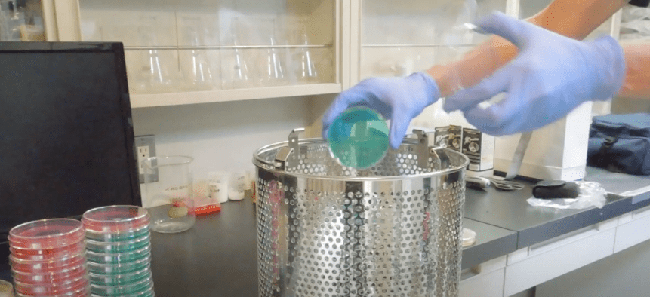How should we sterilize and handle plastic agar plates and petri dishes
Agar plates, also called petri dishes, are an indispensable and irreplaceable part of microbiological research. Especially their functional and practical role in cultivating bacteria, fungi and other microorganisms.
Although preparation is relatively easy and requires minimal culture equipment, cleaning and disposal can be a hassle, requiring users to perform sterilization procedures and minimize the risk of potentially harmful microorganisms contaminating the laboratory environment inside and outside.
The standard protocol requires the use of an autoclave to sterilize the agar plate, because only high temperature and high pressure can effectively kill all microorganisms, and they can continue to exist even under extremely harsh conditions. No need to use an alternative to autoclave sterilization agar plate method, or corrosive chemicals such as microwave ovens, have been proposed instead of using an autoclave. However, due to the resistance of certain microorganisms, these methods have proven to be ineffective.
The method of placing agar plates in a biological waste/biohazard waste bag and sterilizing in an autoclave has become a standard protocol in many laboratories. However, this method has disadvantages because the liquefied agar mixed with biological materials can easily leak in the laboratory or on the way to waste disposal areas and other places and cause confusion.
When the autoclaving fitting with the right with the use of autoclaved agar plate method a plastic / dish can effectively inactivate harmful microorganisms and preventing large area confusion.
Locate and sterilized plastic Petri dish agar plates using the processing method of the autoclave in the following, it is decomposed into a few simple steps.
1.Collect used dishes
Collect the used petri dishes/plates with agar. The agar plate culture / agar dish should remain intact and capped to prevent microbial propagation and reducing the risk of contamination.
2. Load the agar plate / petri dish
The spent culture plate into a plastic Petri dish / agar plates sterilized basket, remove the lid and place it aside, then partially loaded with agar special perforated basket. The plate / dish lid placed on top of the filled portion of the final agar.
3. Set up the bucket and bracket
Provided in a dedicated holder and the solid tub filled with water, to prevent solidification of the molten media in the barrel. The holder for a special perforated baskets placed on the surface, to allow dropping the molten medium. Add water to about half the height of the stand.
4. Loading bucket with bracket
Place the bucket full of water in the autoclave. Next, the porous plastic Petri dish with a removable basket / agar plate is placed on the bracket.
5.Run Cycle
Turn off the autoclave and run a normal sterilization cycle for at least 20 minutes. Note that the number of the sterilizing time due to a plastic dish / agar plates varies.
6. Unload
The coating can be completed and the temperature of the autoclave will cool to the required level, remove the basket. Although the temperature is well documented, keep in mind hot steam, drinks and media.
7.The Chunk
Petri dish / culture plate and in the plastic of the lid melts, please note that has been forged in large piece again. Some of the agar is penetrated / fused to the plastic, but you must be a sterile, please do not touch the part that agar is arranged in order to prevent clogging. The majority of the agar was mixed with the water in the bucket to melt.
8.Throw Away- No Mess!
Dispose of the plastic block, and we will pour the water into a biohazardous liquid container or drain, where it can be safely disposed of and finally disposed of. This is not only safe, simple, and not messy!
As you can see, the dish disinfection can be done safely and easily, almost without causing any confusion, thereby greatly reducing the risk of contamination.
If you are interested in petri dishes, please fill out the contact form and our sales representative will contact you as soon as possible.
Post time: Nov-09-2021














